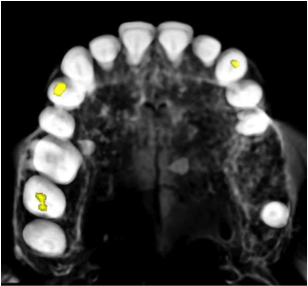Application of postmortem computed tomography images for dental identification
It is very important to record the dental findings of unidentified bodies when performing personal identifications. However, the crown surfaces of teeth are covered with hard enamel, and as the roots are buried with the alveolar bone, the insides of the teeth are unobservable from the surface. Moreover, as the interior of the mouth is narrow, tooth-colored materials may be overlooked. Although dental radiography is indispensable for conducting the best dental diagnosis, teeth of a charred body may collapse upon contact, and therefore photography may be difficult.
Therefore, the method of using computed tomography (CT) images collected prior to the forensic autopsy for dental identification has been studied.
To date, the study details include the detection of composite resins from teeth via an analysis of differences in the CT values as well as an age estimation study based on the pulp cavity to tooth volume ratio.
Ayaka Sakuma

